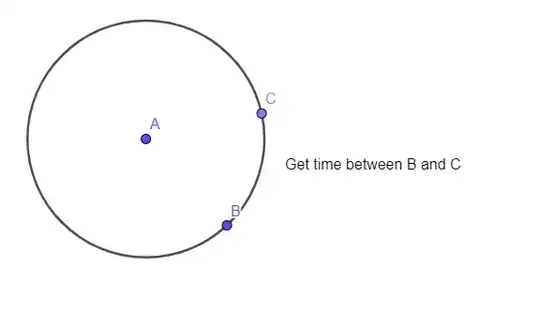I'm making a 2D game. It involves the player swinging around a grapple hook in perfect circular motion, however, I want to make the cooldown for this ability based on predicted end position for the grapple hook. (I'll probably make it later based on the actual duration of the swing, but for learning purposes I want to try to accomplish this)
Is there any consistent way to calculate how long it would take for point B to reach point C?
local radius = adventurer.position:Distance(self.hook.position)
local angularSpeed = self.hook.direction == 0 and 1200/radius or -1200/radius
local angle1 = math.atan2(adventurer.position.y - self.hook.obj.position.y, adventurer.position.x - self.hook.obj.position.x)
local angle2 = math.atan2(self.hook.endPosition.y - self.hook.obj.position.y, self.hook.endPosition.x - self.hook.obj.position.x)
return (angle2 - angle1) / angularSpeed
This is how I'm currently accomplishing it, and it works (granted it breaks based on the direction it's facing, but that can be fixed in the future). However, my results come up like this
0.37500011637114
0.37499976172673
0.29999967327458
0.30000022575076
0.22499981690334
0.22500003318263
0.22499987895093
0.150000220043
0.14999986219868
0.074999761129465
0.075000182872622
0.074999642457876
0.074999641417049
Is there any way to get consistent time? Where the results would be more like
0.10
0.09
0.08
...
Instead of like
0.22
0.22
0.22
0.14
0.14
0.14
0.07
0.07
...
